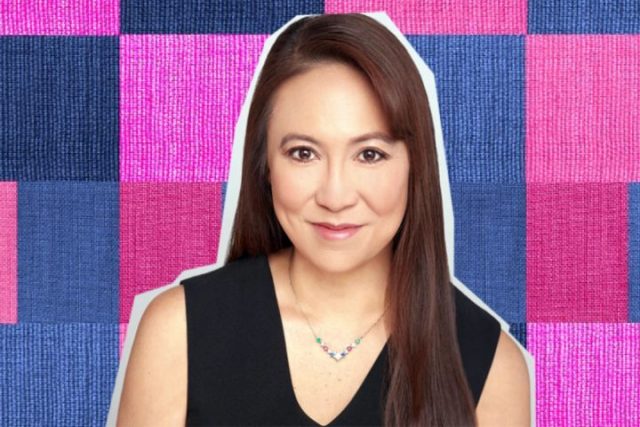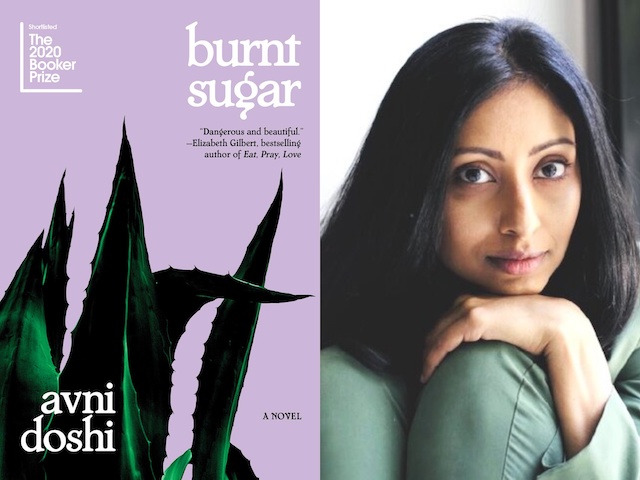The author of Miracle Creek on courtroom dramas, the unrealistic expectations placed on mothers, and writing an immigrant whodunnit

April 18, 2019
Angie Kim’s debut novel Miracle Creek hooked me with its opening lines: “My husband told me to lie. Not a big lie. He probably didn’t even consider it a lie, and neither did I, at first.” From there, we learn about “the incident,” an explosion in a hyperbaric oxygen chamber that kills two people, including an eight-year-old child, and sets into motion the trial at the center of this genre-defying story. Miracle Creek was a read that kept me up all night, then stuck the next day in my brain and my heart: it’s a propulsive page-turner with plenty of plot, but it’s also a story built upon a bedrock of humanity, one that highlights the complexities of our relationships to one another. It’s a juicy courtroom thriller, but also a deeply sensitive exploration of the immigrant experience, marriage and family obligations, the paradoxes of parenting, and the world of special needs children.
Angie and I chatted while she was on a long bus ride from D.C. to New York.
—Mira T. Lee
Mira T. Lee: So to start from the beginning: Were those always your opening lines?
Angie Kim: No. For the longest time, my opening line was “The pounding. It’s the pounding I remember most,” which is a rhythmic homage to the opening line of Russell Banks’ The Sweet Hereafter (“A dog. It was a dog I saw, or thought I saw.”). One of the first things I did when I sat down to draft my novel was to consider various structure options. I love novels like The Sweet Hereafter that start with a huge incident and then explore the implications and aftermath from many different people’s perspectives, and I ended up going with that structural option here. But after I finished my first draft, it occurred to me that the secrets and lies that the characters keep—even the most innocent, small lies—had such tragic consequences, and at that moment, the line “My husband asked me to lie” popped into my head, and I knew I had to use it.
Well, I think it’s the perfect opening line. The story is so rich. There’s the “whodunnit” aspect, but you also dive into the family dynamics of the Yoos, recent immigrants from Korea who run a hyperbaric oxygen therapy (HBOT) business, as well as the challenges faced by an infertile couple, and three parents of special needs children—all of whom are clients using the Yoo’s HBOT as an alternative therapy (and therefore also suspects in the arson case). What did you focus on first—plot details, characters, themes? Did you know what “kind” of book you were writing when you started?
For a good six months or so, I focused on free-writing by hand, exploring who the main characters would be and what their lives were like, both before and after the HBOT explosion. I always knew that the explosion and deaths and injuries would anchor the novel in some way, but exactly how it would play into the novel wasn’t something I figured out until much later. So based on that, I’d say that the characters and how their lives were affected by both the HBOT treatments and the explosion were my initial focus.
So this is an obvious one: why hyperbaric oxygen therapy (aka HBOT), and why call it the “Miracle Submarine”? Is this a common term?
Well, I actually have personal experience with HBOT. One of my kids, who was born deaf in one ear and also had celiac disease and ulcerative colitis as a preschooler, became an HBOT patient. So for one summer, we went into a group HBOT chamber twice a day for hour-long “dives.” The first time we saw the chamber, my son said “It looks like a submarine!” We had been watching The Beatles’ Yellow Submarine for family movie night, and it did look like that, with portholes on the sides, thick steel walls, a hatch opening. So from then on, the HBOT chamber was “the submarine.”
I found the whole HBOT experience to be immersive and intense. The families were sealed up in this chamber for an hour at a time, with nothing to do but talk (toys and electronics and books and such were prohibited inside due to the fear of fire). We shared life stories and traded information about the various illnesses our kids were contending with. Later, when I started thinking about writing a novel, I thought immediately of the HBOT chamber. It’s a crucible of sorts, both physically in that you’re trapped in there, as well as emotionally.
Yes, I can imagine that the confined space would encourage an honesty with both oneself and others that you might not have elsewhere. But before I get to that… You have such a diverse cast of characters in your book. The Yoos are Korean; Elizabeth, the defendant charged with setting the fire that blows up the facility and killing her own autistic child, is a white woman; Abe, the prosecutor, is African American; Teresa, another HBOT client/parent is Latina; Matt and Janine, experiencing fertility issues, are a biracial couple. Any particular inspirations behind these choices?
Well, I think it’s true what they say about pouring a lot of yourself and your own stories into your first book. It was important for me to have a Korean immigrant family because I’m an immigrant myself. Moving from Seoul to the United States, to Baltimore was a formative experience for me. I was a pre-teen in middle school, I didn’t speak English, my family was very poor, and I had a hard time dealing with the separation from my parents when they decided to open a corner grocery store in a dangerous part of Baltimore, while I lived with my aunt and uncle in the suburbs. I wanted to explore that from both the child’s perspective (my own) as well as from the parents’ perspective, which I’d never really considered before.
The biracial couple was also important because my husband is white and from a small town in the South. There are some tensions from both my family and his that we had to overcome early in our relationship, and I thought including these would be a great way to heighten the tension in the novel.
And finally, with respect to the other characters—in looking through other courtroom dramas, it always frustrated me that so many of the ace lawyers are white men. It was important to me to showcase characters who are diverse in other ways.
As a mom myself, I found your exploration of parenting—both within the Yoo family, and also in the world of special-needs children—to be complex, nuanced, and powerfully moving. Though love doesn’t absolve parents from moments of regret, or even hatred, these kinds of thoughts are almost never expressed aloud, and are always coupled with intense guilt and shame. And yet, Elizabeth and Teresa, both mothers, admit to having all sorts of horrible thoughts about their children. There’s even a scene where Elizabeth admits to physically hurting her child, who turns out to have autism. It’s so painful to read, but there’s also a brutal honesty there. In fact, your characters often voice dark thoughts, and I imagine it couldn’t have been easy to put these down on the page. Did you ever think, “Oh, I can’t actually say that. People will think I’m a horrible person!” And if so, how did you overcome that urge to self-censor? Were those passages difficult to write?
You referred a little while ago to the darkened HBOT chamber, how it must have encouraged honesty. Well, it really did. It felt like a confessional in there, and we encouraged each other to be honest and say those dark, sometimes shameful thoughts out loud because they helped both the confessors and the listeners feel better, to give perspective to those thoughts for what they were: honest feelings that we all have at vulnerable moments because we’re human. I think my closest friends are people like that, whom I can be completely honest with. So when it came time to put those types of thoughts down on paper, I didn’t find it difficult, I think because I’d already spoken them out loud or heard them spoken out loud by others. I feel really strongly that we have unrealistic and harmful expectations of mothers to always be Good Mothers, with a capital G and M—to be perfect. So whatever I can do to tear those expectations down, I try to do, and writing is one of those ways.
I certainly appreciated it, and I think a lot of other parents will, too. So, I know you have a background in law, and as we get deeper in the book, the trial aspect of it really snaps into focus, and you get super technical about the timing of events, motives, secrets, lies, cover-ups, and the ever-evolving roster of suspects. Tension mounts, new information comes to light at just the right time—every chapter, a twist is revealed. How did you keep creating these twists and turns? Did you have it all outlined in advance? How did you keep your strands in order, and the timeline straight?
I tried to have it outlined in advance, and I did even write a very broad outline after I wrote something like 50 pages. But I completely veered from it and what I thought might happen (even who set the fire and how and why) ended up being different from what was in that initial outline. As I wrote, though, I did need to keep everything straight. My writing space is this tiny nook in the corner of my bedroom, like a little closet area under the attic, where the ceiling is sloped down so you can’t even stand up. The walls of that nook are covered with charts and timelines and chronologies for the day of the explosion, the month preceding that day, and the four days of the trial, with each chart covered in color-coded arrows and character initials and such. It was like a logic puzzle, and I had a blast doing it.
Do you have any photos of this nook? I love spying on other writers’ processes.
I’ll take pictures and send them to you! I’m a really visual person, and I need things written down like that to make sense of them.
One line that Janine says struck me: “That was the thing about lies, they demanded commitment…. It was a type of loyalty, to her story, to herself.” Why do you think people lie—and refuse to back down?
I’m laughing because this is such a frequent topic of conversation with my friends with kids. I read a most amazing essay recently by a fiction writer named Katherine Min, who talked about how she used to lie all the time, even about things that were inconsequential or easily verifiable as untrue. I can’t do justice to what she wrote, but she talked about how she realized that she was saying out loud what she wished could be true, like that she’s actually a blonde princess from some European country but was transformed through surgery to look Korean and given to a Korean family to hide her from some evil group or something like that. Anyway, after reading this essay, I realized that I used to do that all the time as well. Certainly, some of it was my wishing that something was true and trying to convince others—but it was also the fun in creating a story and trying to convince others of its truth, which is at least partially related to fiction writing, I think. But once you tell a lie, no matter how innocuous, it’s embarrassing to be called out as a liar. And the humiliation of that, I think, is what makes people commit to their story and double down with each denial. It’s a fascinating topic!
I agree… maybe fodder for your next book? In addition to lying, many of your characters keep secrets in order to “protect” people they love. Do you think this is also true and/or necessary in real life?
Certainly, as a lawyer, I saw this a lot: people hiding secrets or outright lying to protect people they love, or their businesses or colleagues, then justifying it to themselves by thinking it’s not all that important or it all goes to serve the greater good in the end. But I don’t think it’s necessary at all. The opposite, really—I think even the tiniest of lies or secrets requires bigger lies, bigger secrets, to protect that first lie, and it just keeps building and building until it can’t be contained any longer, and the whole thing ends up being disastrous. That’s at least my experience. I really think there is no such thing as a “little” or “harmless” lie or secret. It’s easy to say that, and it’s another thing altogether to practice that in real life, but I really do believe you have to try.
Well, I loved seeing the ways small secrets and lies compounded until the whole thing had to explode, it was brilliant. At the end of the book, after tragedies occur and the truth finally comes out, we see an aspect of atonement. Why was it important for you to include this?
Call me a romantic or an optimist, but I really believe that these characters are good people who faced difficult decisions and made mistakes that seemed little at the time, but ended up having horrific consequences. I wanted to be fair and give these characters a chance to redeem themselves, to acknowledge what they’ve done and give voice to the incredible pain they must be feeling, knowing that they’ve caused so much pain to others. Nothing can change what happened, but at least they can atone for their sins and mistakes. Or maybe it’s just my Catholic upbringing that’s somehow snuck in there!
This one’s for the aspiring authors out there. What was the most frustrating part of writing this book?
That’s easy—how long it took to write it! I’m such a painfully slow writer. It took me something like three years to write the shitty first draft. I’m a much better and faster editor, so the rest of the process was delightful by comparison. But it was such a grind, cranking out chapter after chapter and being like, when is this going to END?! Feeling like I’d written so much and yet, I was only 25 percent done, or 50 percent, or whatever. When I was approaching the end, I was so ecstatic that I just wrote, almost without stopping. That was an amazing feeling, being able to see the light at the end of the tunnel.
And now that it’s finally coming out, what’s your experience been like leading up to publication? Any particular highs or lows you’d like to share?
I think the high I’m most proud of and that I savor most personally is reading the reviews and personal messages from early readers, particularly those who have experienced some of the struggles that I tried to highlight in my novel. Parents who have experienced medical issues with their kids have written, saying that they loved reading those sections of the novel and feeling like they’re not alone, and readers who immigrated to the US and felt some of the pain of loneliness and displacement. That makes me feel so gratified, like everything that I went through to write and publish this novel is more than worth it.
Lows… I think just the impatience that comes with waiting and waiting and waiting for April 16 to arrive!
Any favorite books you’ve read lately?
Oh so many! Let’s see—there’s a great book called Everything Here is Beautiful by a wonderfully talented author named Mira T. Lee that comes to mind (haha, but seriously, I loved your novel!). There are so many forthcoming and recently-released novels I’ve read lately. In fact, that may be one of the “lows” of this pre-pub experience–realizing just how many books there are out there that are amazing, and wondering how in the world my book will do among them. Just by way of narrowing the list, I’ll focus on some of the Asian-American writers’ books I’ve loved: R.O. Kwon’s The Incendiaries, which I thought featured the most amazing prose I can remember reading in quite some time, Nicole Chung’s All You Can Ever Know, which made me cry, it’s so raw and emotionally honest, and Alexander Chee’s How to Write an Autobiographical Novel, which I’ve been turning to for inspiration lately, as I’ve been writing my own personal essays.
Excellent. Any idea what’s next?
I’m working on a second novel. I’m still at the free-writing stage so I couldn’t tell you much more than that!



